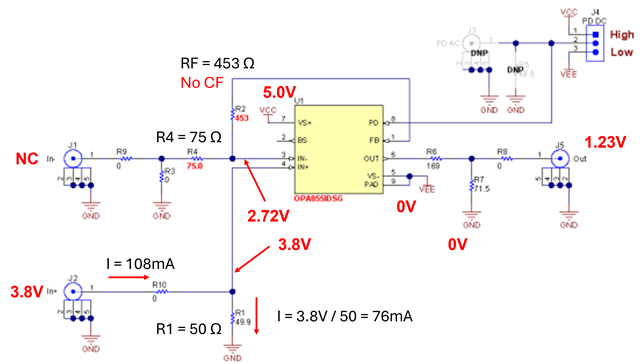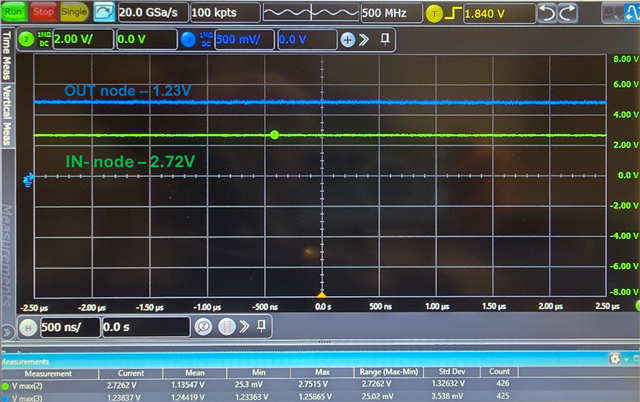Other Parts Discussed in Thread: OPA855
Tool/software:
I am testing OPA855DSGEVM as TIA presented in the OPA855 datasheet.
Supply voltages are connected in single-supply mode, VCC is set to 5V positive supply voltage, and VEE and GND are connected together to negative supply voltage from a supply voltage generator.
In+ node is set to 3.8V as shown in Figure-9.1 in OPA855 datasheet and In- is not connected yet.
While supply generator is turned on to supply VCC and In+ node voltages (Vcm), I am seeing large amount of current (~108mA) through In+ node and 28mA at VCC node reading from the supply voltage generator.
Is this 108mA current expected from In- node under these supply voltages?






